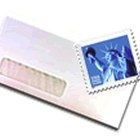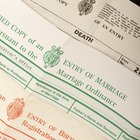
At first glance, writing a letter can seem like a simple task. But if someone has asked you to write a verification letter, you might be momentarily stumped. What's a verification letter? What is the purpose, and what should I say? These are good questions – and a great place to start before you do face time with a computer screen.
Just as their name implies, verification letters serve to confirm some fact or situational reality. You might have been asked to write a letter verifying employment, residence or enrollment – the most common forms of verification letters. Your third-party verification serves as important proof, and it could pave the way to someone being offered a job, being extended a lease or being granted admission to a school or organization.
Be Discerning Before You Write
If this is the first time you've been asked to write a verification letter, be certain that you're undertaking the task for someone you know and trust. Remember that your good name is on the line. While a verification letter doesn't quite rise to the level of a character reference, it pays to be discerning about any document to which you attach your name and, by extension, reputation.
Gather the Details
Do your due diligence before you write by asking for pertinent details: the name and title of the recipient, the recipient's company (if relevant) and the address, including city, state and postal code. It might sound obvious, but be sure to ask exactly what you're being asked to verify. For example, one prospective employer might request only verification of someone's start date with your company. Another employer might also wish to verify salary. Details matter, and it's always simpler to cover all the bases in one letter than to be asked to write a follow-up letter or fill in other details over the phone. Also be sure you know the recipient's preferred delivery format. In the interest of time, she might want you to email the letter; another recipient might request that you send the letter through the postal service.
Aim for Concision, Politeness
Like most business letters, verification letters should be brief – in other words, just a few paragraphs and definitely confined to one page. Adopt a polite and professional tone.
Write a Brief Letter
Open your letter by establishing your purpose for writing, as in, “I am writing to verify the employment of John Smith.” Explain your relationship to the person who has asked you to write the letter – in other words, that you are his employer, colleague, landlord, counselor or whatever your role may be. Devote the second paragraph to ancillary information, but be careful to stick to the "script” you've been asked to provide. As an employer, it's helpful to include a description of the person's work habits and contributions. As a landlord, it's useful to know the person's overall payment history. Brevity is best; long-winded anecdotes might detract from your purpose. Close the letter by including your contact information and an offer to provide additional information, if necessary. Invoke a professional closing, such as “Yours truly.”
Edit and Proofread
Edit your verification letter for grammar and style, and correct any spelling or punctuation errors. It makes sense to show the letter to the person who has asked you to write it before you send it. In this way, you can also enjoy a “turn of the table” by asking for verification of your work on his behalf.
Related Articles

How to Write a Thank You Note to an ...

How to Write a Recommendation Letter ...

How to Write an Email to a Friend

How to Write Letters to U.S. Soldiers ...

How to Tell a Co-Worker His Email Is ...

How to Find a Missing Person Through ...

How to Write a Letter of Reference for ...

Proud of You Letter Ideas

How to Write a Character Letter for a ...

Proper Etiquette for a Graduation ...

How to Write a Formal Letter of ...

What Does It Mean When Someone Ignores ...

How to Ask Your Friend to Be the Best ...

How to Write a Letter to Grandma

How to Find Out When Someone Died

How to Deal With Someone Who Accuses ...

How to Write an Invitation to Elected ...

How to Find Out If Someone Is Who They ...

How to Express Condolences to a Coworker

Etiquette of Listing the Deceased ...
References
Writer Bio
Mary Wroblewski earned a master'sdegree with high honors in communications and has worked as areporter and editor in two Chicago newsrooms. She launched her ownsmall business, which specialized in assisting small business ownerswith “all things marketing” – from drafting a marketing planand writing website copy to crafting media plans and developing emailcampaigns. Mary writes extensively about small business issues, andespecially “all things marketing.”
Photo Credits
Jupiterimages/Brand X Pictures/Getty Images